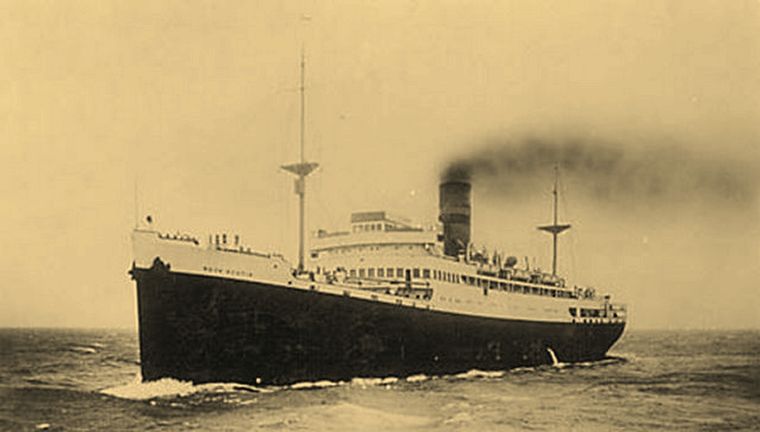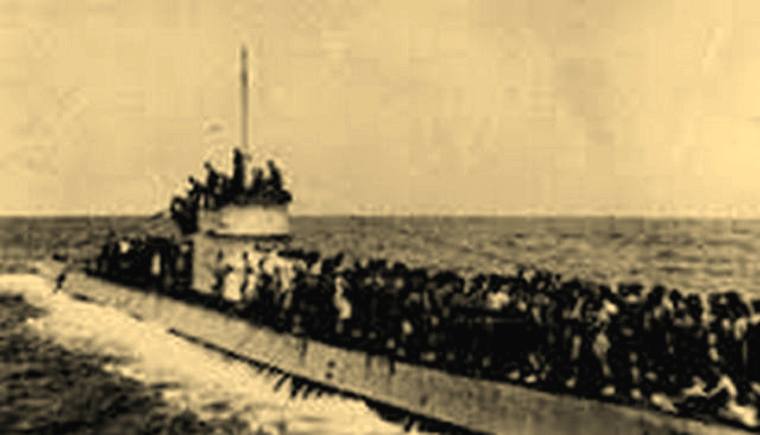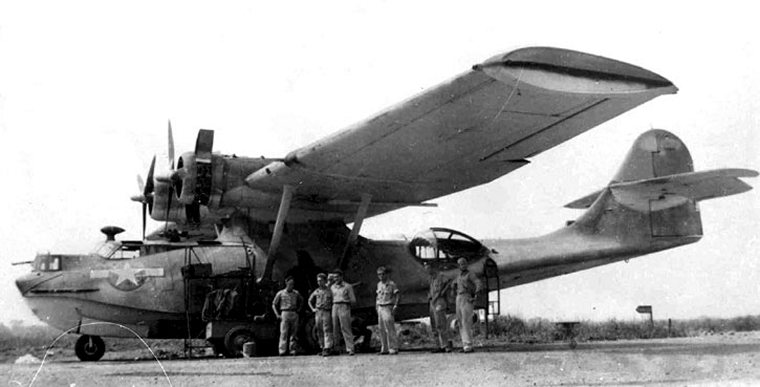THE 75th ANNIVERSARY OF THE NOVA SCOTIA SINKING OFF ST LUCIA
By Dr JC van der Walt, Richards Bay

The Nova Scotia had 1 052 passengers on board
Saturday morning, 28 November 1942:"I am sorry…..I am terribly sorry…..I will radio Berlin…..Help will come….. Be brave."
This is what German submarine captain Robert Gysea (31) of U-177 repeatedly shouted in English after he realised that he had mistakenly sunk the zigzagging British troopship, Nova Scotia with three torpedoes. She sank within ten minutes. There were 773 Italian prisoners of war on board. They were the allies of the Germans!
Only 124 Italians were later rescued by a Portuguese frigate. German headquarters radioed the "Laconia Order" to Gysea:"Continue operating. Waging war comes first. No rescue attempt."
Eye witness, Italian Carlo Dominione (29), wrote: "We thought that we would be rescued when the submarine surfaced after the ship went down, but the crew fired machine guns to warn us off as we tried to swim towards it."
Grand Admiral Karel Dönitz, had initially allowed the captains of U-boats to rescue the victims of ships torpedoed by German submarines. However, after the "Laconia incident", he forbade any further such an attempts using the "Laconia Order".
On 12 September 1942 a 20 000 ton passenger ship, RMS Laconia, sailing between Cape Town and England and midway between Liberia and Ascension Island, some 1100 kilometres from the nearest land, carrying 2 732 passengers including 1 793 Italian prisoners of war, the allies of the Germans, plus civil passengers including women and children, soldiers and crew, was mistakenly torpedoed at 22h00 by Korvettenkapitän, Gustaf Julius Werner Hartenstein (32), of German submarine, U-156.
The Italian prisoners of war were left locked in the cargo holds as the ship sank, but most escaped by breaking down hatches. Werner Hartenstein was a German officer with a heart! He immediately commenced rescue operations. U-156 broadcast their humanitarian intentions on open radio channels to all Allied forces in the area and was joined by the crews of several other U-boats in the vicinity to rescue the survivors. After surfacing U-156 picked up 193 survivors, including five women, who were accommodated on the fore deck and given dry clothes, hot tea, bread and medicine.

Laconia survivors on a U-boat
Sadly, on 17 September the U-boat rescue operation was spotted by a United States B-24 Liberator bomber, piloted by Lieutenant James Harden who received orders from Airfield Commander, Captain Robert Richardson, to bomb the U-boats which were towing the hundreds of survivors. The Liberator made four bombing runs, killing scores of survivors and damaging Hartenstein's U-boat thereby forcing U-156 to submerge slowly, to cast 193 survivors on fore deck into shark infested waters.

B-24 U.S. Photo US Air Force/commons.wikimedia.org
On 17 September Grand Admiral Dönitz sent a message to all U-boat commanders forbidding any attempt to help survivors of sunken ships. This became known as the "Laconia Order".
A total of 1 113 survivors were eventually rescued. Sadly, 1 619, died. 1 420 of the dead were Italian prisoners of war!
Doris Hawkins, a nurse, lost a 14-month old baby, named Sally, in her care, when a life boat overturned. Doris and 67 survivors, in an open lifeboat, rowed for 27 days over a distance of 1 100 kilometres, before reaching land in Liberia. Only 16 survived.
Admiral Karel Dönitz informed Werner Hartenstein by radio on 17 September 942 that he was awarded the highest German military honour, the Knight's Cross of the Iron Cross. Sadly, a Catalina Flying Bomber Boat sank U-156 on 8 March 1943 killing the humane Korvettenkäpitan Werner Hartenstein and his crew.
As a result of the "Laconia order", Robert Gysea was forced to leave 1 052 passengers of Nova Scotia to their fate in shark infested waters, 48 kilometres east of St Lucia in Zululand. Exactly 858 passengers died - 654 ITALIAN PRISONERS OF WAR- plus Italian internees- and one Italian child, Valcheria Ignisti (8), plus 96 crew members, 93 British- and South African soldiers, who acted as guards, eight naval personnel and a few passengers.
Only 196 people survived. This was the worst South African maritime loss and mass shark attacks during World War Two, and this terrible human tragedy haunted Admiral Robert Gysea for the rest of his life.
Kapitänleutnant Robert Gysea fired three torpedoes from a distance of 380 meters. It was a direct hit and the Nova Scotia blew up, caught fire, rolled to port and sank within ten minutes in shark infested waters. They were not able to send a distress signal.
The log of U-177 records: "In the water there are hundreds of survivors drifting in their lifebelts, or on rafts or rubber boats. I see that Italians are floating in the water." Gysea took two on board.
The oil bunkers were on fire causing many burn casualties. The crew of U-177 took photographs of the sinking ship. Only two lifeboats out of six were launched. The rest of the survivors had to cling to life rafts and to pieces of wreckage.
The only female survivor was the South African born Italian, Alda Lorenzino, of Durban. She had married an Italian, Gastone Ignisti, at the age of 18. They moved to East Africa, where Gastone died just before the war broke out. Trapped in Eritria, 28 year old Alda worked for the British Forces as an interpreter, and fell in love with a British Officer, Robert Taylor, who, in late 1942, arranged for her and her daughter, Valcheria (8), to be shipped back to the relative safety of Durban on the Nova Scotia.
She allowed a British Officer to jump into the sea with her daughter and place her in a life boat before she herself abandoned the burning ship. Alda failed to reach the lifeboat that eventually disappeared from sight forever.
A Destroyer picked up a survivor after three days on a raft. The Italian, Carmelo Dimeo (29), clung to his small raft for almost fourteen days before he was washed up alive on the beach near Mtunzini in Zululand.
Portuguese Frigate NRP Afonso De Albuquerque saved 192 survivors.
Captain Jose Guerreiro De Brito of the frigate Afonso de Albuquerque reached the scene of the sinking some 30 hours later on 29 November 1942, only to find hundreds of floating corpses and only 192 survivors.
The frigate started to pick up survivors until late at night, including Captain Alfred Hendler and the only female, the Italian, Alda Ignisti, plus 123 other Italian survivors.
In total De Brito saved 192 survivors from certain death, thanks to Robert Gysea's call to Berlin. De Brito's crew took photographs of a few of the survivors on rafts and debris.
The Afonso de Albuquerque reached Lourenco Marques on 30 November 1942. The 123 Italian prisoners of war were free at last.
Catalina flying boat from St Lucia destroys last German submarine In SA.

Catalina. Photo commons.wikimedia.org
On 20 August 1943 a brand new German submarine, U-197, under the command of Korvettenkapitän, Robert Bartels (31), was 973 kilometres east of St Lucia and 413 kilometres south of Madagascar, when she was sunk by a Catalina flying boat from St Lucia, Zululand, piloted by Flight Lieutenant LO Barnett DFC. This achievement was the result of South African Direction Finding Radios that now pin-pointed the submarines with great accuracy. Subsequently Admiral Karel Dönitz instructed all U-boats to leave the Indian Ocean for ever.
|
       |























